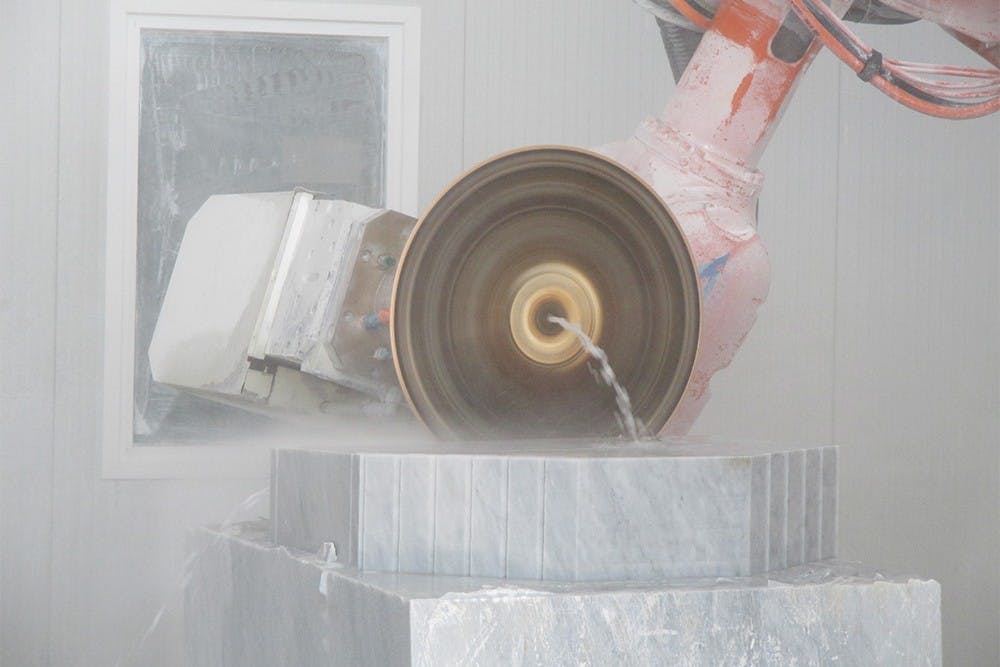A marble block being chipped away at, slowly transforming into a work of art — it’s an image taken straight out of the Italian Renaissance. Except it isn’t. Because the thing doing the chipping is not a hand, but a robotic arm.
Art graduate student Alvin Huff, ASU alumnus Eric Clausen and art professor Mary Neubauer were the ones behind that robotic arm. In June, the three were working on an imperative called The Digital Stone Project, which took traditional sculpting techniques and modernized them with a digital edge.
Neubauer was invited to the project in 2014, bringing two ASU students with her to collaborate with some of the highest ranking collegiate artists from all over the world.
“The reason ASU students were invited is our long record of working with 3-D tools probably dating back to the mid '90s. So, I think, as a university, we were one of the early adopters of new 3-D technologies,” Neubauer said.
The artists on the project said the use of digital sculpting was revolutionary — allowing for cleaner cuts and designs that were virtually impossible without the arm’s precision.
The project involved the artist digitally designing their vision for the piece, each adding their own digital aspect and touch to each piece and delving into this virtually unexplored medium of art.
Clausen, for instance, made a piece called “Noise,” where he scanned his face in 3-D and then digitally reconstructed his ears to be massive in the sculpture.
After designing the piece, they traveled to Italy where the actual workshop existed and used a robotic arm along with their own skills to transfer the piece into marble.
“We’re combining the traditions of art and sculpture with new methodologies that are available,” Clausen said. “However, if you look at those methodologies, there are analogs of that that go back to the Renaissance and before. We may use a laser-scanner, back in Renaissance times they used a pointing machine.”
Huff said the machine used a long series of XYZ coordinates chained together to create a path, follows the path using different saws and tools.
However, Huff also said the machine lacked some human artistry that this sort of sculpting used.
“After the tutorial I was carving at the parts that didn’t quite get gone by the machine. It can only go so small,” Huff said.
Clausen’s sculpture, for instance, was comprised of facial features. So while the robot buffed out the majority of the work they designed, Clausen had to jump in at the end to carve and give the sculpture a sort of spark of life.
“They can’t do it all, they can’t do the magic of the hand finishing at the end. That is something robots can’t do,” Neubauer said.
However, they believe the technology is, in the end, revolutionary and they hope to incorporate it into the ASU arts program.
“We’ve always been a leader in 3D tools and I think we’ve kept that edge,” Neubauer said. “This school is really wanting to put together a 3D tools lab and, of course, all of those things are contingent upon funding, but in my mind we have no choice because we’re going to be revitalizing this crucial art form.”
Related Links:
Barrett Artists and Musicians encourages students to show their creatives sides
Local artist finds voice through paintings
Reach the reporter at megan.janetsky@asu.edu or follow @meganjanetsky on Twitter.
Like The State Press on Facebook and follow @statepress on Twitter.




